I was showing my mother-in-law the time-lapse photo series for Autumn Splendor, as the design evolved, and thought you might enjoy a recap of the twists and turns of the design process. So here it is: enjoy!
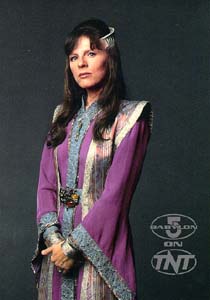
Next, in this blog post, I speculated on the design:
I want to do more work with the “Autumn Splendor” theme ““ developing the concept into something more concrete, something I can actually embody. Right now I have a vision of falling maple leaves, glimpses of gold glitter, and brocade over flowing silk. I have to figure out how to transform that into something I can actually make.
One of the ideas I have been playing with is the transient nature of autumn. As a child, I was fascinated by the leaf bookmarks that my parents would bring home from Taiwan ““ leaves treated with acid to burn away the soft parts, leaving only the spidery, skeletal veins. It reminded me a little of the decorations people put up around Halloween ““ except this was a skeleton leaf, not a skeleton person. Same thing: beauty in transience, delicacy in death’s remnants.
So I really liked the idea of “ghost leaves”, skeletal remnants of a woven design suggesting a leaf.
Skeletal remnants of a woven design, of course, leads directly to devoré, a technique in which the cellulose components of a fabric are “burned out”, usually with sodium bisulfate, leaving only the protein/synthetic components.
I did one pattern sketch, which looked like this:
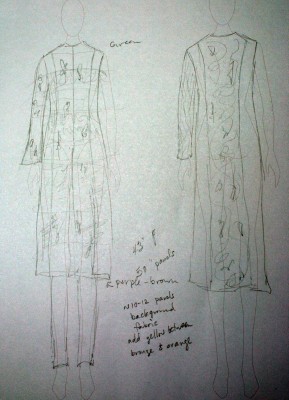
My quest for devore led next to the disastrous sample with cotton-wrapped polyester sewing thread:
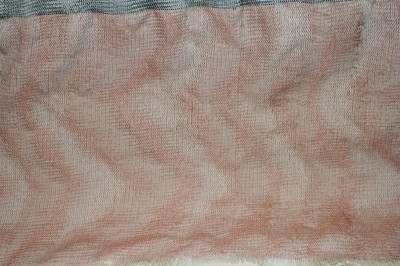
Here I was using a network drafted pattern to give the “feel” of wavy, leaf-floating-to-the-ground patterns, which failed. The fabric, woven with a tightly spun, glazed, cotton-covered polyester sewing thread, also felt just plain nasty.
Back to the drawing board, and another attempt at devore, this time with tencel threads alternating with gold polyester machine embroidery thread. I had to invent a Photoshop technique to design this one:
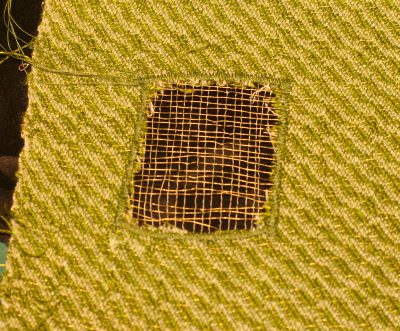
Quite a bit of fiddling with painted warps and knitted blanks later, I had created this sample:
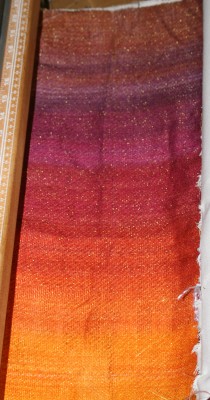
which burned out to this sample:
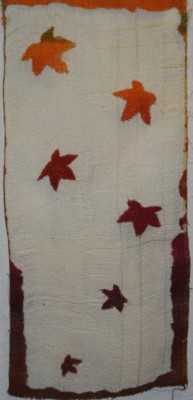
This came out beautifully, but the mesh was far too delicate for a garment. I went back to the drawing board, and decided to reuse a muslin/design that had proved unsuitable for a different project, and to experiment with a maple-leaf design:

I liked this, and developed the idea further, weaving more samples and playing with different surface design treatments. Here is the one I liked best:
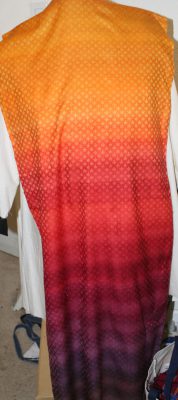
Meanwhile, I was designing the muslin. I played with colored pencils, and decided to try contrasting colors, one dark panel, one light. Here is the sketch I liked best:
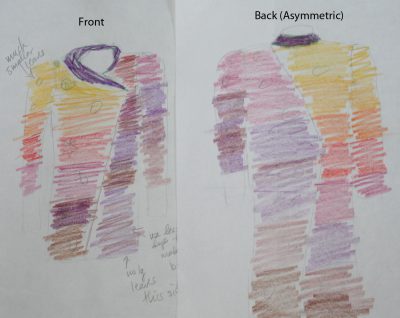
But when I tested it against the muslin, I didn’t like the lines in back at all:
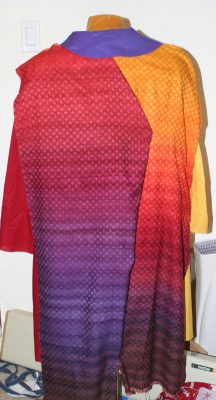
The lines were far too angular and abrupt to represent the downward drift of an autumn leaf. I decided to make the lines curvy, and did a Photoshop simulation to see whether it would work:
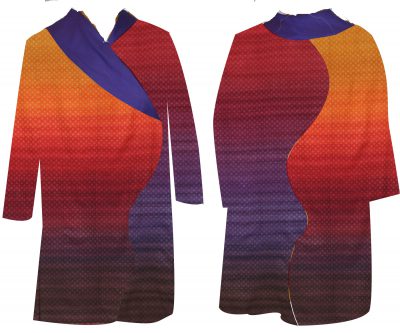
I liked this idea, but the pattern changes would have been far too difficult to execute on a paper pattern. So I studied up on Adobe Illustrator, and learned to draft sewing patterns on the computer:
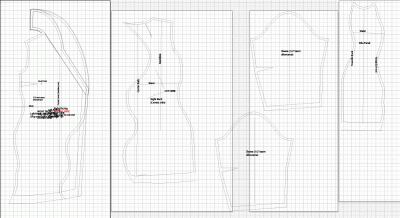
This made pattern drafting far easier, and I created the altered muslin without problems.
Many muslins passed. Finally, on muslin #10, I was feeling stuck. The front felt too heavy, and the curve awkward, dominated by the long collar. A friend saved me from design despair when she asked, “Is the collar really necessary?” And I realized that no, it wasn’t! Long ago and far away, in the previous project, the collar was the focal point, but now it was an unnecessary distraction. I eliminated the collar, and the final design for Autumn Splendor fell into place:
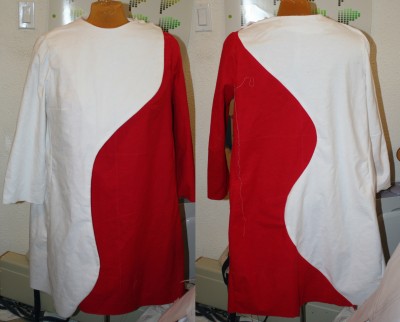
At this point, it looked nothing like my original design inspiration or either of my design sketches – but it was far better than either in execution.
One more muslin, to test what it would look like with the actual colors:
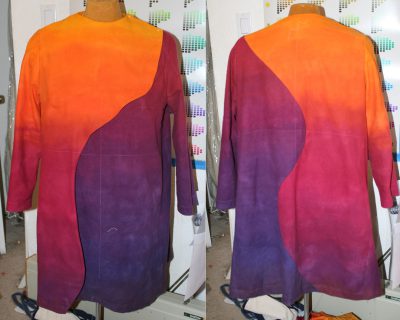
I really really love this design and will use it for the final piece. I will sew one more muslin for fitting purposes, and then launch into sewing the actual garment.
And that’s it! The voyage is not over yet, and I expect some tweaking as I assemble the design, but the basic design is in place. It’s been fascinating to me to “stroll back through time” and see how the design has evolved, and all the many things I learned in this journey. I hope you’ve enjoyed this retrospective as much as I did!
